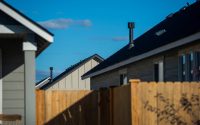Why Britain Is Struggling With Nuclear Power
A rust-colored dome looms over the muddy farmland of Hinkley Point, a headland overlooking the Bristol Channel in southwest England.
When a giant yellow crane hoisted the 150-foot-wide concrete-and-steel saucer into place this winter, it signified a milestone for what will be the first commercial nuclear power station built in Britain since the mid-1990s and a flagship in an effort to revive the industry.
Yet the capping of the first of twin cylindrical buildings for reactors was also a reminder of the prodigious, lengthy and increasingly costly effort to build what is known as Hinkley Point C.
Work has been underway on the plant for more than a decade, yet completion remains years away.
Recently, Électricité de France, the French state utility that is constructing the plant, warned of yet more delays. The start date, which two years ago was scheduled for 2027, has been pushed to the end of this decade, or perhaps 2031.
The additional time will add billions more to a final bill that could reach as much as 47.9 billion pounds, or about $60 billion, EDF said. In 2016, the price tag was pegged at £18 billion.
Nuclear power is regaining favor in the West as a tool for reducing greenhouse gases, and the British government last month announced the “biggest expansion of nuclear power for 70 years.” But nuclear energy’s track record in Western Europe and the United States is not encouraging, with delays and staggering cost overruns plaguing recent projects. The fate of Hinkley Point and another project, planned on England’s east coast in the village Sizewell, could determine whether the nuclear momentum in Britain gathers pace or peters out.
“Hype is at an all-time high,” said Franck Gbaguidi, a nuclear analyst at Eurasia Group, a political risk firm. “Governments will over-promise and constantly under-deliver.”
In what executives say is an all-out effort to finish by 2030, EDF has 11,000 people in Hinkley working around the clock. The welders, engineers and electricians, employed by a multitude of contractors, are taken to the site in a fleet of white buses from a logistics center and from temporary apartments around the faded industrial town of Bridgwater.
There are “an awful lot of workers on site at one time,” said Susan Goss, vice chair of the parish council of Stogursey, the local district. “I think it could well be difficult to coordinate what they are doing,” she added.
Britain was once a pioneer in splitting atoms to generate electricity, building an early series of reactors in the 1950s and 1960s, but the country hasn’t completed a nuclear power station in almost 30 years.
“The U.K. and the U.S. have, in a sense, forgotten how to build nuclear power stations,” said Simon Taylor, a professor at the University of Cambridge’s Judge Business School who has written extensively on the British nuclear program. “We may rebuild that knowledge, but it will take a long time,” he added.
Nuclear plants are incredibly complex structures, and Britain has lacked both a work force with the right skills and contractors versed in choreographing the tasks that add up to a well-run project, Mr. Taylor and other analysts said. In addition, Britain’s process for certifying and permitting one of these installations is painstakingly thorough, costing would-be developers billions.
For one developer, it was too much. In 2019, the Japanese conglomerate Hitachi walked away from a nuclear project in Wales after spending £2 billion. The company blamed escalating costs.
In 2008, when Prime Minister Gordon Brown’s administration kicked off the current push to build nuclear plants, a government study suggested that new power stations could be sending electricity to the grid by 2018.
Since then, only Hinkley Point has reached an advanced stage, while Britain’s nuclear generating capacity declined more than 40 percent as aging plants were gradually turned off, according to the Nuclear Industry Association, a trade group. Over the past year, nuclear stations supplied about 14 percent of country’s electricity, compared with 21 percent a decade ago.
“Relearning nuclear skills, creating a new supply chain and training a work force has been an immense task,” Stuart Crooks, managing director of Hinkley Point, said in a recent memo to staff.
Adding to the problem: The type of reactors being constructed at Hinkley Point have a reputation for being problematic. The British government allowed EDF to buy most of Britain’s existing nuclear power system in 2009, and the company chose a design the French nuclear industry helped develop, known as the European Pressurized Water Reactor, to build at Hinkley Point.
Promoted as among the safest and most powerful reactors ever built, the design is now known for flaws, delays and cost overruns, especially at sites at Olkiluoto in Finland, which began operating in 2023, and Flamanville in France, which is expected to come online this year.
In theory, developers learn lessons each time they build a plant, bringing down future costs, but that process does not seem to have completely succeeded with the reactors at Hinkley, which are the fifth and sixth of this design.
Roy Pumfrey, a spokesman for Stop Hinkley, a group opposed to the plant, reckons it is “doomed” to never be completed. “The reactor design is just too complicated,” said Mr. Pumfrey, a retired teacher.
In his message, Mr. Crooks of EDF placed additional blame for the delays and cost overruns on Britain’s nuclear regulations. In order to meet the requirements, Mr. Crooks said, the original design would need 7,000 changes, including 35 percent more steel and 25 percent more concrete. EDF is owned by the French government.
Britain’s Office for Nuclear Regulation responded quickly, saying in statement on Jan. 25 that it had requested changes after the 2011 Fukushima accident in Japan as well as the experiences with other European pressurized reactors in Europe and China. As for the additional concrete and steel, the regulator said France had similar requirements.
Still, there is evidence that building a nuclear plant takes longer and costs more in Britain. Britain Remade, a group that aims to speed economic development, found that similar reactors had been built much cheaper — not only in China, which leads the world in nuclear plant construction, but also in Finland and France, despite the delays there.
“It’s clear that our approach to planning and financing reactors adds significant costs,” two analysts, Sam Dumitriu and Ben Hopkinson, wrote in a recent study.
Despite the disappointments, nuclear power is gaining political support in Britain and elsewhere as a reliable source of energy with low emissions. If Hinkley Point C is completed, it will power six million homes — more than two and a half times the next largest British nuclear power station. And the steady nature of nuclear power is a significant attribute; renewable energy like wind and solar energy are intermittent.
Prime Minister Rishi Sunak recently announced an additional £1.3 billion to help finance EDF’s construction of its plant at Sizewell, known as Sizewell C.
“Nuclear is the perfect antidote to the energy challenges facing Britain,” Mr. Sunak said last month when announcing a plan to quadruple nuclear-power output by 2050.
Who will pay for this expansion? That’s not exactly clear.
The British government is now the main owner of Sizewell C, having bought out a minority stake held by China General Nuclear, a Chinese state company. EDF has reduced its stake to less than 50 percent from 80 percent, and says it is determined to bring that down to below 20 percent. EDF and the British government are hopeful that the lessons learned at Hinkley Point C will reduce the cost of Sizewell C, which is the same design.
The government, advised by Barclays Bank, is talking to a group of investors about buying into the Sizewell plant. As an enticement, officials are offering a new financing model that will allow developers to recoup their investments sooner.
A few years ago, Chinese firms were expected to play a big role in Britain’s nuclear program, but the British government has soured on their involvement. China General still owns about a third of Hinkley Point C, but it has stopped contributing to the construction costs, according to EDF, leaving the French stuck with paying to keep the work going. China General did not respond to a request for comment. On Friday, EDF said it was writing off about $13.9 billion on the project.
With so much at stake for Britain, EDF and the French government are hopeful Mr. Sunak will chip in more to help finish Hinkley Point and make a success of the next plant.
“It is in the interests of the British authorities that we be a solid partner, to deliver the project in the best condition,” said Luc Rémont, EDF’s chief executive. “And so I am confident that we will find a pathway with the U.K authorities both on Hinkley Point and Sizewell.”
Keith Bradsher contributed reporting from Beijing, and Liz Alderman from Paris.


